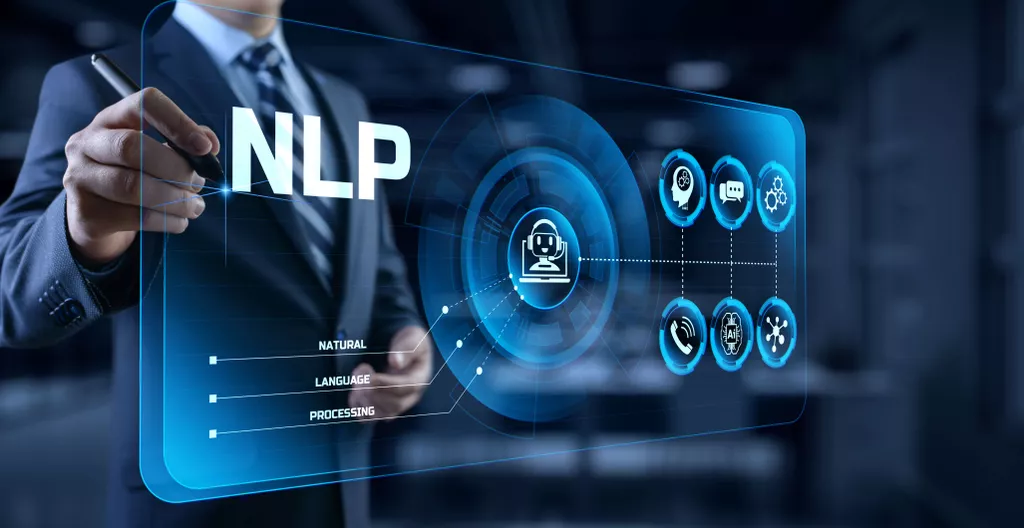Differences Between Conversational AI vs Traditional Chatbot
This API effectively defines what is possible to do with the system on the other side – is it read only, is it full access to write data, etc. It is the gatekeeper of how a tool can interact with other tools and outlines the contract in which a solution is opening up a window in which other services can engage and perform some level of action with it. Conversational AI opens the door to all kinds of messaging and engagement opportunities. Smullen gave Uber as an example as a conversational AI and said he wants to help every company turn into an Uber. Now that conversational AI has gotten more sophisticated, its many benefits have become clear to businesses. Conversational AI technology will enable customers to interact with the application efficiently without any hurdle.
Conversational AI is a form of artificial intelligence that enables people to engage in a dialogue with their computers. This is achieved with large volumes of data, machine learning and natural language processing — all of which are used to imitate human communication. Consumers use AI chatbots for many kinds of tasks, from engaging with mobile apps to using purpose-built devices such as intelligent thermostats and smart kitchen appliances. Marketers use AI chatbots to personalize customer experiences, IT teams use them to enable self-service, and customer contact centers rely on chatbots to streamline incoming communications and direct customers to resources.
Discover Verint’s Conversational AI Solutions
Although the spotlight is currently on chatGPT, the challenge many companies may have and potentially continue to face is the false promise of rules-based chatbots. Many enterprises attempt to use rules-based chatbots for tasks, requiring extensive maintenance to prevent the workflows from breaking down. A supplementary field of artificial intelligence, machine learning is comprised of a combination of data sets, algorithms, and features that are constantly self-improving and self-correcting. With more added input, the platform becomes better at picking up on patterns and using them to generate forecasts and make predictions. The technology is one that can improve traditional virtual agents and voice assistants, optimizing contact center solutions of the future. Although Chatbots and conversational AI may seem similar, they are different concepts and cannot be used interchangeably.
In this setup, all users are typically welcomed by a bot that follows a predefined flow, but they can always choose to talk to a real person. This way, chatbots take a load off support agents so they can focus on more critical requests. If that’s a daily reality for your business, having a quick and efficient communication channel to resolve them can increase customer satisfaction.
II. Enhanced customer service
This means that as you continue to use Conversational AI, it will provide more accurate and personalized responses without needing manual updates or fixes. In contrast, chatbots may require human intervention and maintenance to improve their responses, which can be time-consuming and expensive. Conversational AI, when implemented in chatbots, makes them smarter and more efficient. But the important fact to be noted is that not every chatbot has conversational AI induced in it.
- This is important because people can ask for the same thing in hundreds of different ways.
- Implementing AI technology in call centers or customer support departments can be very beneficial.
- Conversational AI can provide personalized customer interactions, creating a more engaging and tailored experience.
- Users not only have to trust the technology they’re using but also the company that created and promoted that technology.
- Simply book a demo and one of our experts will personally walk you through all the details and answer all your queries.
- Using Conversational AI solutions, consumers can connect with brands in the channels they use the most.
Thus, chatbots are applied by organizations and businesses to interact with users or customers and offer them assistance around 24x7x360. Relying on artificial intelligence, virtual assistant understands and responds to the requests of users in real-time. It can either work independently or as a complement to a live customer service agent. That said, there are times when chatbots are helpful tools for companies. Notably, chatbots are suitable for menu-based systems where you can direct customers to give specific responses and that, in turn, will provide pre-written answers or information fetch requests.
Chatbots: Ease of implementation
It uses speech recognition and machine learning to understand what people are saying, how they’re feeling, what the conversation’s context is and how they can respond appropriately. Also, it supports many communication channels (including voice, text, and video) and is context-aware—allowing it to understand complex requests metadialog.com involving multiple inputs/outputs. They’re popular due to their ability to provide 24×7 customer service and ensure that customers can access support whenever they need it. As chatbots offer conversational experiences, they’re often confused with the terms “Conversational AI,” and “Conversational AI chatbots.”
- These technologies rely on machine learning and deep learning—elements of AI, with some nuanced differences—to develop an increasingly granular knowledge base of questions and responses that are based on user interactions.
- Moving between all of these channels is time-consuming and monotonous, which is what makes it the perfect kind of work to give to modern artificial intelligence bots.
- Training a conversational AI is time-consuming, AI chatbots require a lot of time to train and test the algorithms.
- The chatbot scripts should replicate the user intent and business objectives.
- When you consider the idea of having to anticipate the 1,700 ways a person might ask one straightforward question, it’s clear why rules-based bots often provide frustrating and limited user experiences.
- Chatbots are known as “cold software programmes”, which means they aren’t able to read and interpret the context of user requests.
There’s a big difference between a chatbot and a genuinely conversational experience, said Smullen. Rules-based chatbots follow a predefined workflow, while AI-driven chatbots leverage NLP (natural language processing) and machine learning to understand what the user is asking or looking for. This second one is more conversational, and I suspect there would be many who would argue that it is true conversational AI. Chatbots are largely company-based solutions while virtual assistants are user-oriented. Chatbots assist businesses to give the best possible experience and engagement to their customers, as well as their sales and marketing teams. For example, the H&M chatbot functions as a personal stylist and recommends outfits based on the customer’s personal style, leading to a personalized user experience.
II. Natural language processing (NLP) abilities
“Over 5 million questions are answered by Ask Julie annually. With Julie, waiting for service is a thing of the past, as she’s easily capable of simultaneously serving the needs of every Amtrak.com visitor.” Depending on the channel used for the interaction, voicebots can be grouped into subgroups. Because they are accessible 24/7 and can manage several interactions at once, additionally, they can be configured for activities like lead generation or sales. Many online websites use conversational AI to develop a customer-centric business. ASR is useful here because you can easily search transcriptions for specific words and phrases. (Can’t do that with voice recordings.) It can also be used when listening to recordings isn’t possible and is a component in voice-based conversational AI like Dialpad’s intelligent IVR system.
What is conversational AI examples?
For example, conversational AI can automate tasks that are currently performed by humans and thereby reduce human errors and cut costs. For example, conversational AI can provide a more personalized and engaging experience by remembering customer preferences and helping customers 24/7 when no human agents are around.
Chatbots and virtual assistants are different tech products; therefore, their names shouldn’t be intermixed. Any kind of virtual tool that allows for automation will help you reduce manual, repetitive work. But as the options are plenty, you need to dig deeper to find the software that will best match your needs. Chatbots and virtual assistants have stark technical and functional differences as well as benefits specific to each tool. A virtual assistant (VA) can be used both for personal and business purposes. The key difference between live chat and a chatbot is who leads the conversation — a human agent or a bot.
What is Conversational AI and How Does it Work?
They can pick up the tone negativity of interaction and automatically switch to being sympathetic, apologizing, and more understanding to the end-user. And all in a smooth, clear, and immersive experience for the end-users mimicking the behavior and interaction style of human agents. Conversational AI is any technology set that users can talk or type to, then receive a response from. Traditional chatbots, smart home assistants, and some types of customer service software are all varieties of conversational AI.

Not only can Conversational AI tools help bots recognize human speech and text, they can actually understand what a person wants — the intent behind the inquiry. LivePerson explicitly trained its NLU to support conversational bots throughout the commerce and care customer journey. Chatbots are rules-based programs that provide an appropriate response for a particular scenario.
What Types of Data can Conversational AI Consume?
The ability of chatbots to provide users with instant assistance is one of their key features. In addition, a chatbot can manage numerous interactions at once and is accessible 24/7, unlike a human customer support person. Conversational AI models have thus far been trained primarily in English and have yet to fully accommodate global users by interacting with them in their native languages. Companies that conduct customer interactions via AI chatbots must have security measures in place to process and store the data transmitted. Finally, conversational AI can be thrown off by slang, jargon and regional dialects, which are all examples of the changing nature of human languages. Developers must train the technology to properly address such challenges in the future.
The goal of the subfield of conversational AI is to make it possible for computers to converse with users in a natural, human-like manner. It uses natural language processing algorithms to comprehend and respond to human language while creating chatbots and virtual assistants. Rule-based chatbots respond to user inputs following established rules, whereas AI-powered chatbots utilize machine learning algorithms to get better at responding over time. AI-powered chatbots are typically more sophisticated and can offer users more specialized support. For the remainder of this article, the term “chatbot” will be intended to refer to a conversational AI system.
Overcoming Data Silos for Enhanced Customer Experience
Because conversational AI bots have more advanced interaction skills, they can take over more tasks and improve automation processes in companies and organizations. NLU helps the bot understand the context of human language, such as syntax, intent, or semantics. From OpenAI’s GPT chatbots to Google’s Bard , AI-based technology has created quite a buzz lately. NLP is frequently interchanged with terms like natural language understanding (NLU) and natural language generation (NLG), but at a high level, NLP is the umbrella term that includes these two other technologies. Earlier we mentioned the different technologies that power conversational AI, one of which is natural language processing (NLP). NLP isn’t different from conversational AI; rather it’s one of the components that enables it.
What’s the difference between a bot and an AI?
Conversational AI platforms feed off inputs and sources such as websites, databases, and APIs. In contrast, bots require continual effort and maintenance with text-only commands and inputs to remain up to date and effective.
Is Siri an AI bot?
Siri is Apple's virtual assistant for iOS, macOS, tvOS and watchOS devices that use voice recognition and are powered by artificial intelligence (AI). Such technologies–Siri, Alexa and Google Assistant– that have become an integral part of our families, so to speak–are excellent examples of conversational AI.


Leave a Reply
Want to join the discussion?Feel free to contribute!